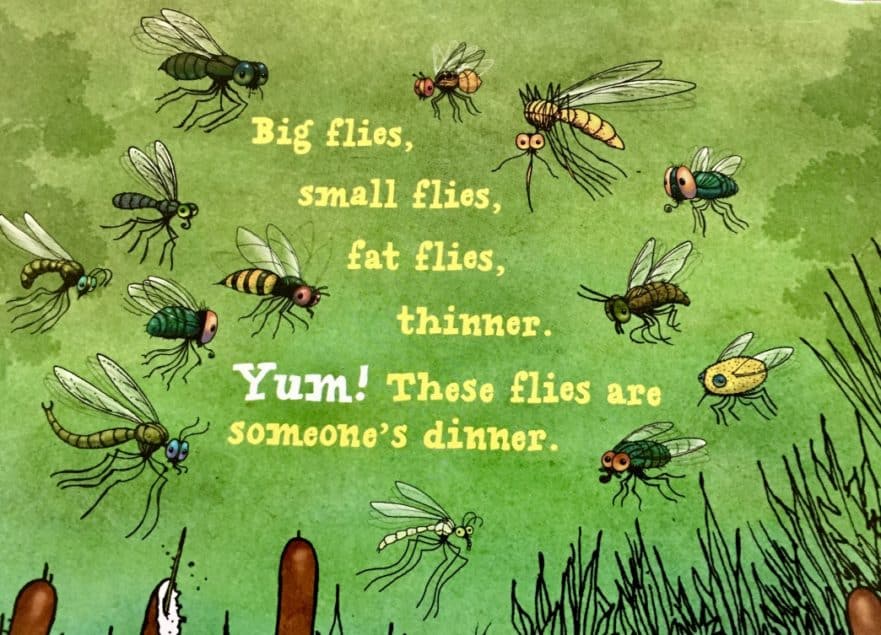The title of this book is just too irresistible! Thirteen flies become tasty snacks in this clever reverse counting book about subtraction, predators, and prey. A swarm of thirteen flies buzzes along, losing one member to each predator along the way. Whether the unfortunate insects are zapped or wrapped, liquefied or zombified, the science is real–and hilariously gross.
Oh, your family will love it!
13 WAYS TO EAT A FLY

Thirteen flies become tasty snacks in this clever reverse counting book about subtraction, predators, and prey.

Thirteen species of flies and gnats meet their untimely demises as they’re devoured by amphibians, fish, birds, plants, other insects, and more. The structure of the book is deceptively simple: Each doomed insect is described by a single participle (which rhymes with the participle that describes the next) along with a comical cartoon of each fly’s passing.
As each fly bites the dust, a small note identifies the species by its common and scientific names. The plot becomes more sophisticated with a brief paragraph that explains how and why each fly was eaten.

As there are 13 flies, the final death doesn’t have a rhyme, but it discusses flies as food for humans and how food scientists may be looking toward the insect world for alternate protein sources.

This book allows our young readers across different age ranges to enjoy the book either for the simple rhymes (and visual zest) or for the intriguing study of the food web.

~~~~~~~~~~~~~~~~~~~~~~~~~~~~~~
About the author….
Sue Heavenrich holds a master’s degree in environmental and evolutionary biology. Her graduate thesis focused on the reproductive lives of cockroaches—since then, she’s studied bumblebees, spiders, and ladybugs. After teaching high-school science, Sue began writing about science and nature in magazines, newspapers, and blogs.



